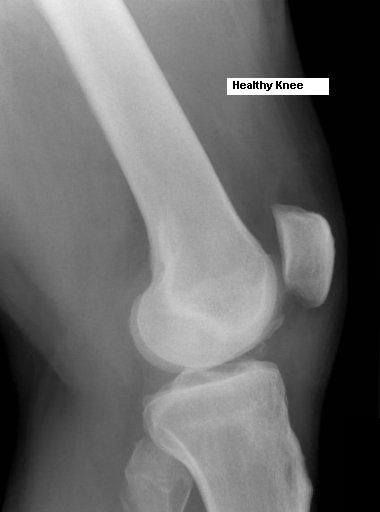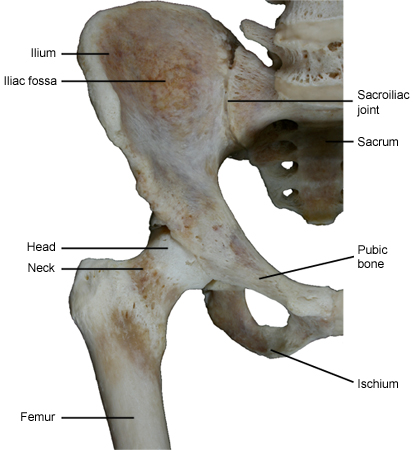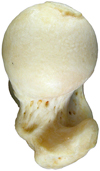- Human Joints Introduction
- Classification of Joints
- Fibrous joints
- Cartilaginous joints
- Synovial Joints
Human Joints Introduction
A human joint is defined as a region where there is unification of two or more bones or parts of bones of the skeleton, in medical practice this is referred to as an articulation.
The structure of the joint, including the way in which the surfaces interact, the flexibility of surrounding tissues, and position of ligaments, muscles and tendons all play an essential role in determining the type of movement that occurs across the joint.
Classification of Joints
Functional Classification of Joints
This classification is based on the amount of movement permitted by the joint.
- Synarthroses Joints: immovable joints e.g. joints between the skull bones, a tooth in its socket
- Amphiarthroses Joints: slightly moveable joints e.g. between the tibia and fibula, the discs between vertebrae
- Diarthroses Joints: these joints are the most common type of joint and are highly mobile e.g. hip joint, elbow etc.
Structural classification of Joints
This classification is based on the differences in the type of material and mechanism by which the bone surfaces interact.
Below is an x-ray of a healthy knee joint.

Fibrous joints
Fibrous joints are united by fibrous tissue.
Some examples of types of fibrous joints are:
- Sutures: Sutures are found within the skull. Sutures consist of two bones situated close together that unite by either interlocking or overlapping one another.
- Syndesmosis: A syndesmosis is a fibrous joint which consists of two bones which are united by a sheet of fibrous tissue. An example of this type of joint is the interosseous membrane in the forearm, which links the ulna and the radius.
- Gomphosis: Gomphosis consists of a bone with processes (tooth) that slot into a socket, producing a joint which cant move. Mobility of a joint of this type indicates an abnormality, for example a loose tooth in an adult.
Cartilaginous joints
In cartilaginous joints the union between the bones occurs via cartilage.
There are two main categories of cartilaginous joints:
- Primary cartilaginous joints: Primary cartilaginous joints are temporary joints. These joints form during the growth of the skeleton.
- Secondary cartilaginous joints: AKA symphyses are strong joints that are rendered slightly moveable. These joints are good for shock absorption and provide structural strength. An example of such a joint are the intervertebral joints.
Synovial Joints
These joints are the most common, and are found in nearly all the limb joints. These joints contain a joint cavity which contains fluid allowing the bones to slide over one another without grinding and causing pain. The cavity of the joint is lined by a membrane which is responsible for the production of the fluid. Reinforcement of these joints occurs via ligaments.
 |
|
Image courtesy of Dr Iván Saenz (Virtual Medical Vision) |
Synovial joints have three distinguishing features which are:
- A joint cavity
- Articular cartilage
- Articular capsule
Synovial joints can be classified further according to the shape of their articular surfaces or the movement that the joint permits. There are six major types of synovial joints according to this classification system.
- Plane joints: These joints permit gliding and sliding movements owing to the fact that the articular surfaces of the bones are flat meaning they only allow movement to occur in a single plane (uniaxial joints). An example of this type of joint is the joint between the shoulder blade and the collar bone.
- Hinge joints: These joints only permit flexion and extension and are also uniaxial. An example of this type of joint is the elbow joint.
- Saddle joints: These joints are as the name suggests shaped like a saddle, and permit movement in two separate planes and are termed biaxial joints. An example of this type of joint is the thumb joint.
- Condyloid joints: These joints are biaxial. An example of this type of joint is the knuckle.
-
Image courtesy of
Dr Iván Saenz (Virtual Medical Vision)Ball and socket joints: Ball and socket joints consist of spherical head articulating with a dome shaped cup. Due to their structure these types of joints allow movements in multiple planes and are called multiaxial joints. An example of this type of joint is the hip joint.
- Pivot joints: These are uniaxial joints and allow rotation. An example being the joint between the first and second vertebrae in the neck.
References
- Kumar P & Clark M. Clinical Medicine. 5th ed Edinburgh. WB Saunders 2002
- Moore KL & Dalley AF. Clinically Oriented Anatomy 4th ed. Philadelphia. Lippincott Williams & Wilkins. 1999
- Wolloston A ed. Nurse Initiated X-ray Package. Toowoomba health service district, Queensland Health. 2005
All content and media on the HealthEngine Blog is created and published online for informational purposes only. It is not intended to be a substitute for professional medical advice and should not be relied on as health or personal advice. Always seek the guidance of your doctor or other qualified health professional with any questions you may have regarding your health or a medical condition. Never disregard the advice of a medical professional, or delay in seeking it because of something you have read on this Website. If you think you may have a medical emergency, call your doctor, go to the nearest hospital emergency department, or call the emergency services immediately.








